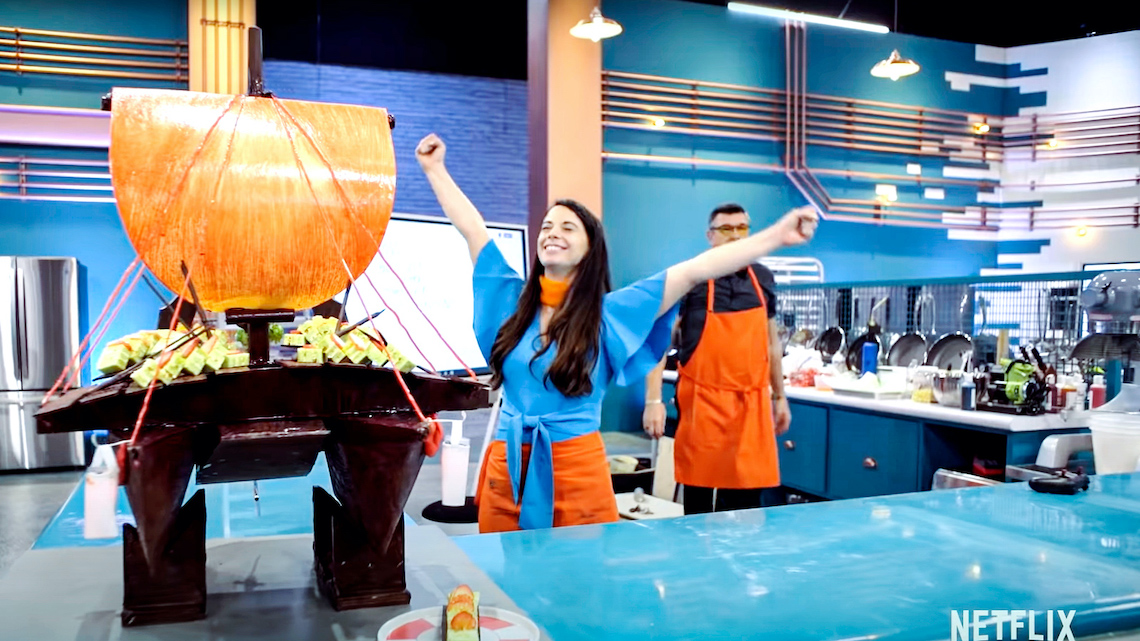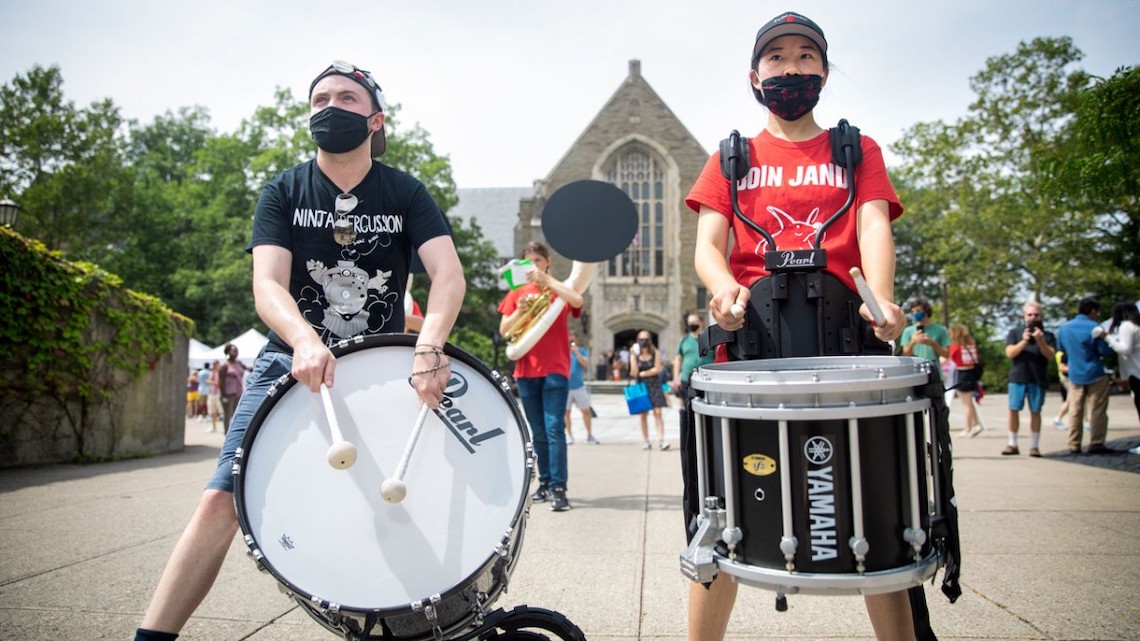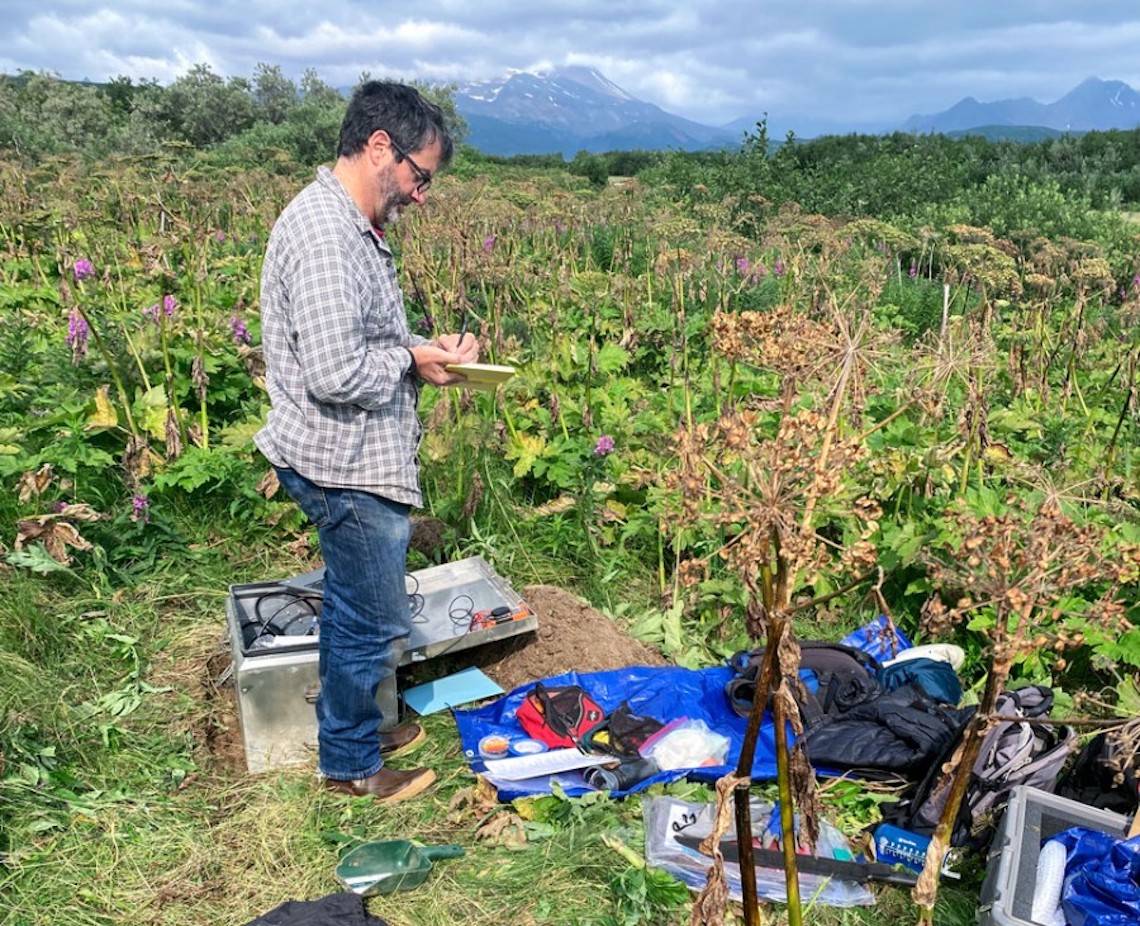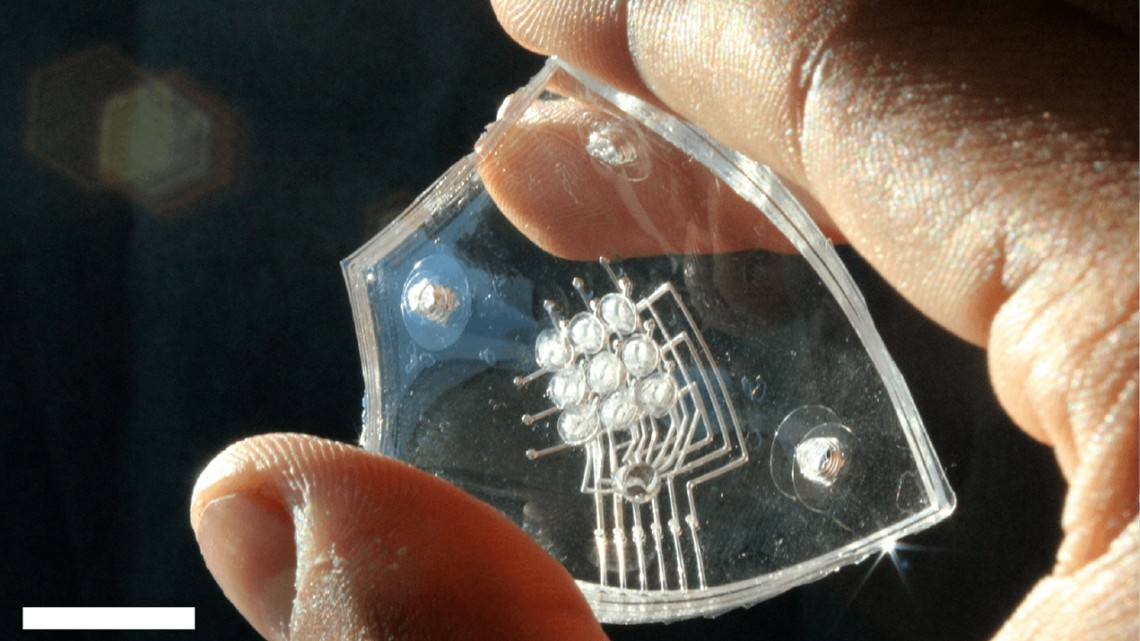Nano stories
This feature appears in the winter 2022 edition of Cornell Engineering Magazine.
Overheard: Engineering alumna rockets to Netflix baking competition

“For me, the entire experience, especially coming from the engineering world, was really eye-opening. I didn’t realize how much engineering actually goes into baking.But ultimately, it also got me out of my comfort zone, which can be really important.”
- Renee Frohnert, M.Eng.’19, after appearing onNetflix’s new baking-engineering competition show “Baking Impossible.”
Around Campus: Big Red Band performs on Ho Plaza

TJ Sheppard ’22, who studies biological and environmental engineering, and Jessica Sakamoto ’22, who studies applied and engineering physics, perform with the Big Red Band on Cornell Move-In Day.
In the Field: Geophysicist sprints to monitor quake aftershocks in Alaska

When an 8.2-magnitude earthquake struck off the coast of Chignik, Alaska, on July 29, geophysicist Geoffrey Abers did the logical –if not simple –thing. He raced to Alaska with a group of collaborators to record its aftershocks. The data they collect could provide new insight into the mechanics of crustal faults and possibly help researchers understand and anticipate future earthquake clusters. “This was the biggest earthquake in the U.S. since 1965,” said Abers, the William and Katherine Snee Professor in Geological Sciences and chair of the Department of Earth and Atmospheric Sciences. “There are very few good recordings of earthquakes this large anywhere on the planet. So that’s a big motivation for trying to understand the sequence as sort of an archetype.”
Teaching Excellence: 203 Phillips Hall ‘flips’ for active learning
Earlier this year, Phillips Hall Room 203 was ‘flipped’ into an active-learning classroom thanks to renovations thatconverted fixed seating to mobile tables and chairs for 64 students.In active learning, students are first introduced to concepts through online lecturesand coursework outside of the classroom, and classroom time is usedfor team activities that may have traditionally been considered homework–flipping the classroom paradigm.Theroomrenovations added white boards on the side and back walls, additional electrical outlets for student devices, new audio-video equipment,and acoustical ceiling tiles to absorb noise from group discussions.
Trending: The Class of 2020 returns

Sixteen months after receiving their degrees, the Class of 2020 –whose final year at Cornell was upended by the COVID-19 pandemic –donned caps and gowns on Sept. 19for an in-person Commencement. This photo of the Cornell Engineering procession reached 12,635 people and received 1,256 likes on Instagram (@CornellEng).
Maker's Corner: Combustion creates braille display for electronics

Imagine an iPad or a Kindle for the blind, with inflatable braille that changes shape under a user’s touch. A collaboration led by Rob Shepherd, associate professor of mechanical and aerospace engineering,has made a crucial component for such a technology: a haptic array of densely packed actuators that cause silicone membrane “dots” to pop up when triggered by combustion.The technology is also stretchable and conformable, and the researchers anticipate it could be incorporated into a range of applications, such as soft robots and wearable virtual reality equipment that simulates artificial touch. The biocompatible components could also be used for surgical tools that manipulate tissue or open blocked passageways in medical patients.

